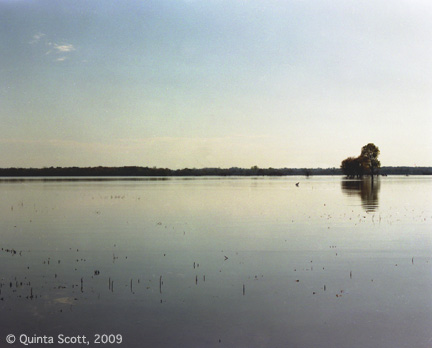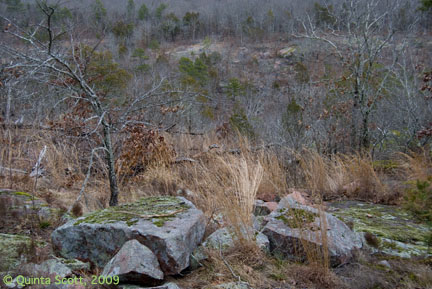
Confluence Peninsula, St. Charles County, Missouri, October 1993, during the Flood of 1993 the peninsula held 260 billion gallons of water
The Migratory Bird Conservation Commission, chaired by Interior Department Secretary Ken Salazar, approved a $999,570 grant under the U.S. Fish and Wildlife Service’s North American Wetlands Conservation Act (NAWCA) for wetland restoration in the Confluence Region of Missouri.
The Great Rivers Habitat Alliance calls this peninsula the Confluence Floodway and this region between the Missouri and Mississippi Rivers has lost 90 % of its wetlands to agriculture. Since, the Flood of 1993 developers have been looking at all that flat land and seeing subdivisions and industrial park, provided levees can be build high enough and strong enough to prevent flooding. Never mind that three times ( 1973, 1986, 1993) in the last half of the 20th century, flooded Missouri, which runs at and higher elevation than the Mississippi, has taken a hike across the peninsula and tried to cut a new channel to the Mississippi. The alliance would like to protect up to 100,000 acres in the floodway with conservation easements. The NAWCA grant will help.

Raccoon Ranch, St. Charles County, Missouri
The 125 duck clubs, like Raccoon Ranch, that maintainwetlands on the peninsula, use moist soil methods to provide food for the 250 species of migrating waterfowl (4 million in all) that visit the region every year. From October to late March, 35,000 ducks settle in for the winter.
The grant was a small part of the $26 million the NAWCA grants to protect and restore more than 200,000 acres of wetlands in the U.S. and Mexico.
At the same time the commission approved $11.5 million to add more the 3,500 acres of wetlands to seven units of the National Wildlife Refuge System.

Riverlands, St. Charles County, Missouri
The Corps of Engineers maintains Riverlands in the backwaters of Lock and Dam 24 as a migratory bird sanctuary.
Filed under: Birds, Ecosystem, Fine Art Photography, Flood Of 1993, Mississippi River, Missouri, Riverlands, U.S. Army Corps of Engineers, Upper Mississippi, Wetlands | Tagged: Confluece Missouri and Mississippi River, Great Rivers Habitat Alliance North American Wetlands Conservation Act, NAWCA, St. Charles County Missouri | Leave a comment »











